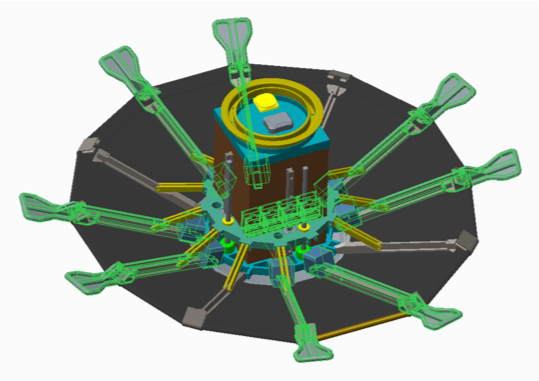Stephen K. Robinson’s Lab Receives NASA Grant to Study Hypersonic Entry Vehicle Control
Professor Stephen K. Robinson’s lab has received a grant from NASA to study the aerodynamics of flap-based steering system for small atmospheric entry vehicles moving at hypersonic speeds. The proposal, titled “Aerodynamic Flaps for Control of Hypersonic Atmospheric Entry Trajectories,” will receive $215,400 over two years.
This study is part of the NASA Ames Research Center’s “Pterodactyl” project, which collaborates with Robinson and his Human/Robotics/Vehicle Integration and Performance (HRVIP) Lab at UC Davis. The project, part NASA’s Artemis mission to develop technology for returning Lunar regolith samples to Earth, can potentially be used to return small payloads from spacecraft in low Earth orbit, such as the International Space Station.

The goal is to design a small, specialized hypersonic entry spacecraft that can be deployed directly from space, de-orbit and steer itself through the severe heating of the atmosphere and decelerate to a specific location on Earth or another celestial body with an atmosphere.
While small hypersonic atmospheric entry vehicles already exist, many return to Earth unguided. This design will allow for precision targeting at specific locations while surviving atmospheric entry. This will help to reduce operational vehicle recovery costs and allow for timely retrieval of sensitive samples.
To do this, the team will use an umbrella-shaped aeroshell called a deployable entry vehicle and an active flap control system to steer the vehicle along a lunar return trajectory.
“We think we may have an idea where the vehicle can survive and actually change trajectory during the re-entry itself,” said Robinson.
The grant funds research led by M.S. student Brandon Reddish, who is studying the aerodynamics and sensitivity of these flaps in order to optimize them for accuracy and survival at speeds up to Mach 30. The UC Davis team will model supersonic and hypersonic flows around the flaps using mid-to-high fidelity computer modeling, and compare the results with experimental NASA wind tunnel data for validation.
This project introduces new engineering challenges such as how to guide and control blunt bodies and aerodynamic analysis of a complex shape in a high-temperature hypersonic flow.
The Pterodactyl project bridges UC Davis and NASA Ames Research Center in multiple ways. The project's principal investigator is alumna Dr. Sarah D’Souza (MAE ’13), now a project manager at Ames. Reddish also has been working over the summer at Ames to support this project and Ph.D. student Ben Margolis and alumna Zane Hays (MAE ’18) are also involved.
“One of the most exciting things that happens in the HRVIP lab is that our students go and work in the industry during the summers,” said Robinson.
The team spans multiple organizations and institutions, including UC Davis, NASA Ames Research Center, NASA Johnson Space Center, and the Johns Hopkins University Applied Physics Laboratory.
Learn more about the Pterodactyl project on NASA’s website and through the team’s technical paper published at the AIAA Aviation Forum in June 2019.
